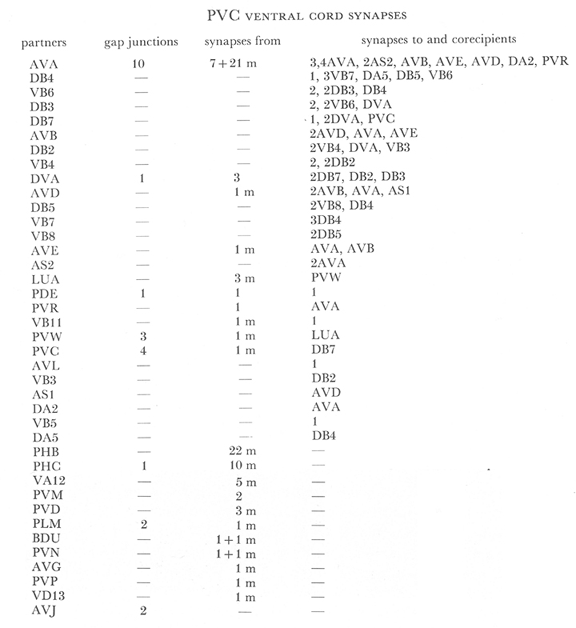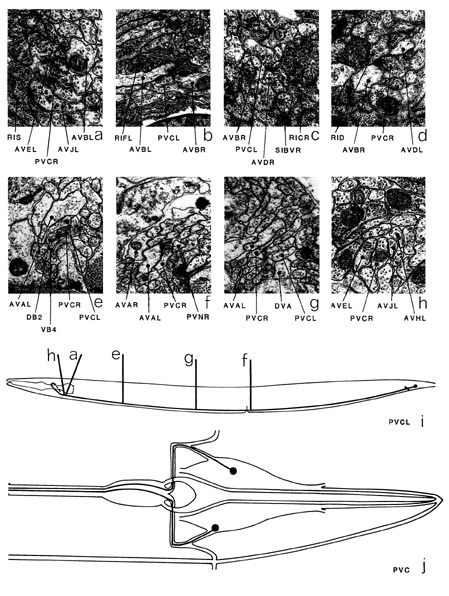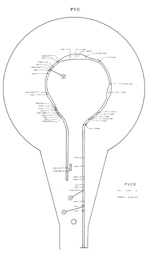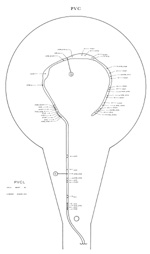PVC is a pair of interneurons with cell bodies situated in the lumbar ganglia. Processes leave
the cell bodies, enter the nerve-cord via the lumbar commissures and run anteriorly on the
right-hand side of the hypodermal ridge, in the ventral region of the cord. The processes of PVC travel the length of the cord and enter the nerve ring, running right round it near the
middle of the neuropile and eventually ending ventrally. While in the ring, the processes of PVC run in close association with each other and with those of AVB. In the nerve ring, the
main synaptic output is to AVB (a, b, c, d), RID (d) and AVD (c). There are also a few
synapses to AVA and AVE (a). The main synaptic input is from PVP (*a), ALM (*b), AVM (*a), AVJ (*a) and AQR (*a); there are also gap junctions to itself and AVJ (h). In the ventral
cord, the main synaptic output is to AVA (f), and to VBn (e) and DBn (e) motoneurons; the
main synaptic input is from AVA (*b), PHB (*a), PHC (*a), VA12 (*d), LUA (*b), PVM (*h), PVN (*c), DVA (*f) and PVD (*a); there are gap junctions to AVA (g), PVW (*d), PLM (*h), AVJ, PDE and itself.
In the ventral cord, the processes of PVC run adjacent and ventral to the processes of AVA;
the processes of AVB run more dorsally, seldom running next to those of PVC. This may
explain why there are so few synaptic interactions with AVB in the nerve cord compared with
the nerve ring.
Magnifications: (a, c, d, h) x 25500, (b, e-g) x 17000.


Click pictures for higher resolution images




